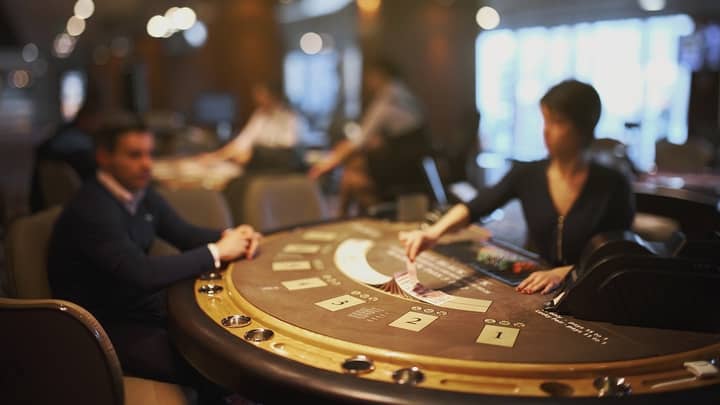Mit Gambling Team
MIT is one of those episodes, which have influenced gambling history greatly, especially history of blackjack game. History of MTI team was immortalized through books, television shows and films that helped it become a true legend of blackjack.
BOSTON (AP) — In the early years of the MIT Sloan Sports Analytics Conference, a couple hundred math whizzes gathered on the school’s campus hoping for a breakthrough that would make them the next Bill James.
As the event and the field grew, they aspired to professional front office jobs, like Theo Epstein or Daryl Morey.
- The MIT Blackjack Team was made up of a collection of students from Boston area schools such as the Massachusetts Institute of Technology (MIT), Harvard Business School, and Harvard University. The goal of the team was simple and led to one of the gambling world’s biggest scandals of all time.
- MIT is one of those episodes, which have influenced gambling history greatly, especially history of blackjack game. History of MTI team was immortalized through books, television shows and films that helped it become a true legend of blackjack.
Now the revered names at the cavernous convention center in Boston’s Back Bay are people like sports bettor-turned Dallas Mavericks number-cruncher Haralabos Voulgaris and other current or former professional gamblers who are using analytics to gain an edge as legal sports betting spreads across the United States.
“Math has always been in gambling to some degree,” said Jeff Ma, a professional bettor and a former member of the MIT blackjack team, who moderated this year’s gambling panel.

“You’re just seeing it go more mainstream,” since the U.S. Supreme Court lifted a ban on sports gambling, Ma said. “It’s more acceptable to talk about now.”
What started a dozen years ago with 175 people listening to a handful of panels in MIT classrooms has now grown into a two-day event with 3,500 attendees from 44 states and 33 countries, including more than 130 teams across the U.S. pro leagues and European soccer.
Mit Gamblers
In addition to the panels featuring everyone from rapper Meek Mill on social justice to Olympic curling gold medalist Tyler George, there are workshops, research competitions, hackathons and live broadcasts and podcasts.
And, now that sports betting is possible — if not quite legal — nationwide, the self-proclaimed “dork-a-palooza” is increasingly turning its attention to gambling.
Perhaps not since the publication of Michael Lewis’ book “Moneyball,” which detailed Oakland Athletics general manager Billy Beane’s use of analytics to build a roster for his underfunded team, has an event so energized the statistical community.
“Stats and sports have always been associated for pretty much since sports have been around,” DraftKings founder Jason Robins said, crediting both James and Beane for popularizing analytics.

“They really popularized the notion that you could gain an advantage. In their case, it was on the field,” Robins said. “It was a natural transition to the viewer, who is not going to get the chance to be the general manager of a baseball team, to figure out outlets for that. And the most natural outlets are going to be fantasy and betting.”
This year’s conference included the first poker panel, hosted by fivethirtyeight.com founder Nate Silver and including 2017 World Series of Poker Main Event winner Scott Blumstein. There were at least two discussions of fantasy sports, one on predicting college basketball’s March Madness outcomes and one on how to keep gamblers from fixing games.
Mit Gambling Movie
There was also a full panel on sports gambling, held in an enormous ballroom named for James.
Like the analytics pioneer, statistically inclined team executives like Beane, Epstein and Morey (a co-founder of the conference) faced resistance from skeptical old-timers.
But gamblers are open-minded to anything that will give them an edge.
“Everybody wants to use analytics” in betting, said Rufus Peabody, a professional bettor, podcast host and the founder of Massey-Peabody Analytics. “You have a lot of smart people with access to the data. You have to be constantly improving just to keep up.”
That’s where the Sloan conference comes in.
Over two days, college math majors rubbed elbows with team and tech executives looking for fresh ideas — and talented minds to implement them.
A research paper competition included topics like “How much do coaches matter?” and “The Eagle Takes Flight: The Economist’s Hierarchical Bayesian Approach to Golf.” At the root of all the math is the same question: How can you find an edge, whether it is in a free agent market or an NHL faceoff circle.
For the Oakland A’s of the late 1990s, as chronicled in “Moneyball,” it was on-base percentage. For sports bettors, it can be the over/under line in a single baseball game or even the final few innings.
Peabody said gamblers can have an edge in two ways: You can have better information, or be better at processing the information. Gamblers used to scour team blogs or local papers for injury information, but the internet has largely leveled the field.
So bettors are looking for a way to profit on the latter.
And there’s more to it than just crunching numbers.
Mit Students Blackjack
“It’s one thing to be able to get the information or do the analytics, just crunch the numbers. But you have to actually interpret it. That’s as much of an art as anything,” said Robins, whose daily fantasy sports company moved into sports betting when the nationwide ban was lifted.
Mit Gambling Scandal
“So I think that gap is still there among people who just have a good instinct for the game and understand, based on some data or information, what to make of it.”